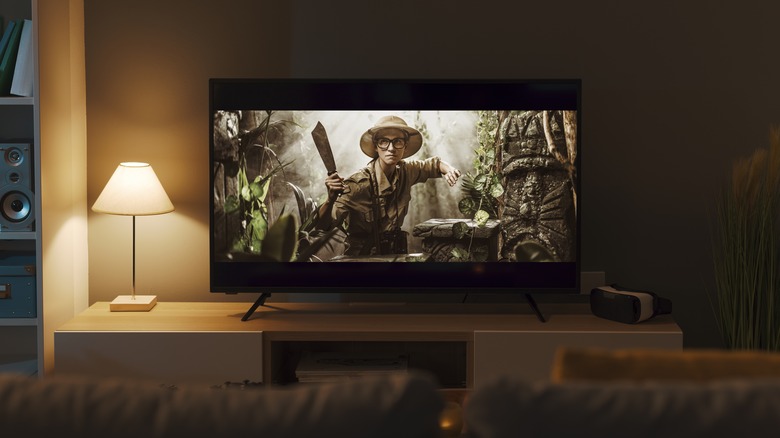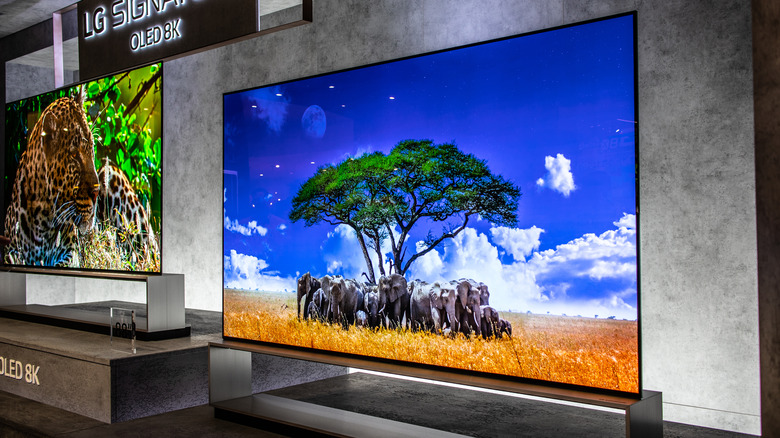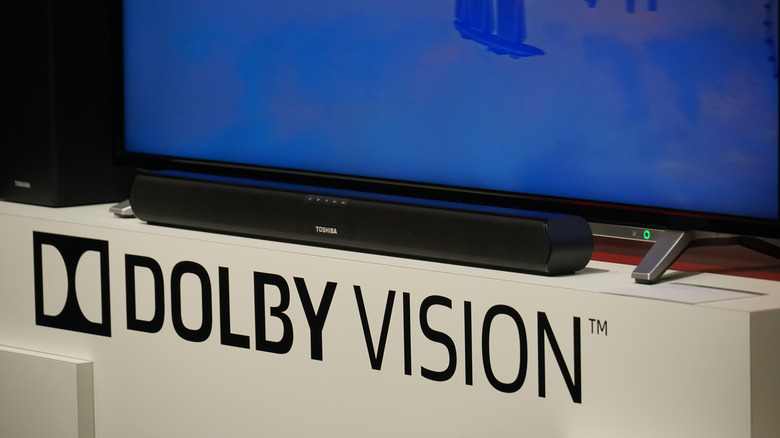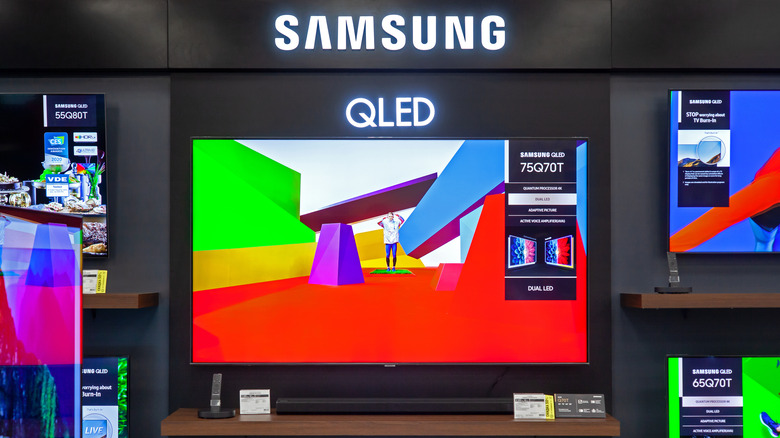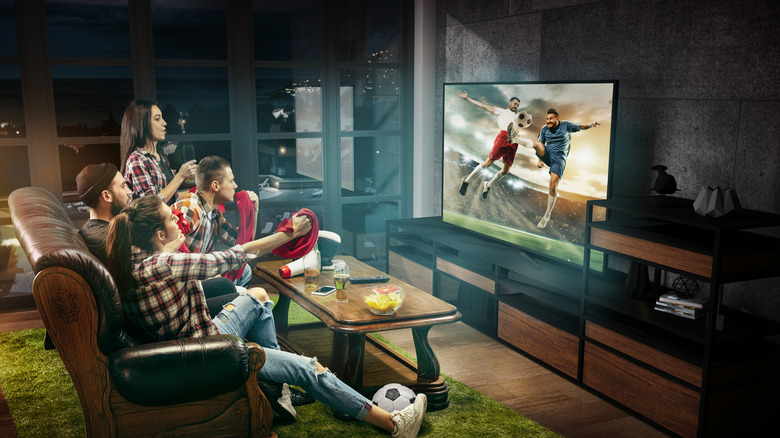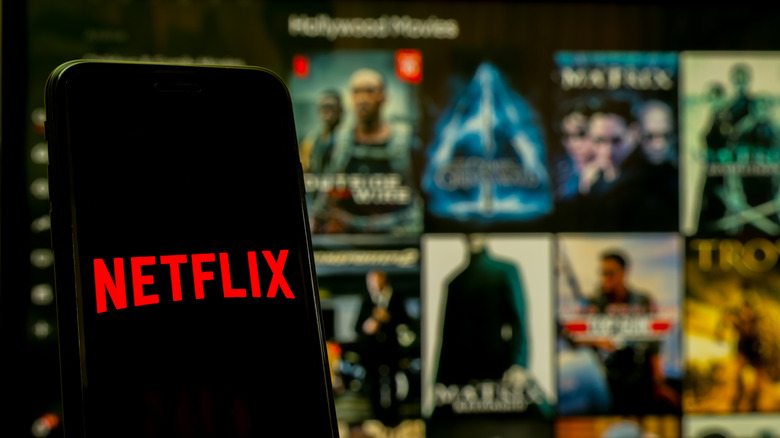What's The Difference Between HDR10 And Dolby Vision?
Displays play an integral part in our interaction with technology. Almost any gadget with a screen gets a special emphasis on not just the quality and the clarity of the display but also its ability to show colors. A feature that is often touted to improve your viewing experience on displays of different scale is High Dynamic Range (HDR), and companies use different terms, such as HDR10, HDR10+, and Dolby Vision to market this technology and sell more displays.
The diverse terminology can understandably be very confusing, especially since companies market every product to be as good as perfect. If you have also been wondering about the differences between these terms and how HDR standards impact the picture quality on a display, here is a quick breakdown to help you differentiate between them to make a better decision buying your next TV, monitor, smartphone, or any other device with a display.
What is HDR10?
High Dynamic Range is a key marketing terminology these days associated with displays used in a myriad of products, including smartphones, tablets, and TVs. The use of HDR technology primarily leads to greater contrast between light and dark tones, offering better visibility in parts of a video or image, as well as improved colors and luminance (via Consumer Reports).
There are many HDR formats including HDR10, which is the most common one we hear of. HDR10 is an open and royalty-free standard that was introduced by the Consumer Technology Association. As per rtings, HDR10 relies on static metadata, which is the set of instructions for colors and brightness levels, for the entire video content. This means that any video that is HDR10 compliant will have the same settings for color, brightness, and contrast through the entirety of its duration. This is important because it ensures consistency across videos that are watched on an HDR10 screen — it would be quite frustrating to watch one movie in bright, vivid HDR quality immediately followed by a video that appears to be much older.
What is Dolby Vision?
In contrast to HDR10, Dolby Vision is a proprietary standard for HDR that was introduced by Dolby Laboratories. This means that while any display manufacturer can include support for HDR10 if the display meets the basic requirements, they must pay a fee to Dolby to be able to get their display certified for Dolby Vision.
As opposed to HDR10, which makes use of static HDR metadata, Dolby Vision injects metadata on a frame-by-frame basis, according to Consumer Reports. This is called dynamic metadata and it results in the picture quality being optimized to look its best for every frame in the video, and that makes the visuals of the video more appealing.
In the middle of HDR10 and Dolby Vision lies HDR10+, a royalty-free standard introduced by Samsung and Amazon Prime Video. HDR10+ also uses dynamic metadata but remains free to use for display manufacturers. Despite the free availability of HDR10+, there are a few reasons why manufacturers prefer to make their displays compliant with Dolby Vision.
Color accuracy
Content intended for a standard definition (SD) display usually supports an 8-bit color depth, which translates to 16.7 million different hues (via B&H). Meanwhile, HDR10 and HDR10+ content is developed at 10-bit color depth and that means it can support up to 1.07 billion different colors, as noted by Sony.
On the other hand, Dolby Vision content can support up to a 12-bit color depth and that implies it can display as many as 68.7 billion colors, according to Lightware. With so many more colors available, Dolby Vision content can not only look more realistic but is also free from artifacts like color banding, leading to a more uniform transition from one shade to another.
One thing to note here is that even though Dolby Vision supports 12-bit colors, there is a dearth of displays that actually support 12-bit colors. You may only find the feature on high-end TVs like the Samsung Neo QLED 8K TV. Meanwhile, Xiaomi's latest flagship smartphone — the Xiaomi 12 — also features a 12-bit display that is made by TCL. Despite this, however, you need an extremely bright display for the color difference between 10-bit and 12-bit displays to be actually visible to the human eyes.
Brightness
HDR10 content is typically created to support brightness ranging from 1,000 cd/m² to 4,000 cd/m², as rtings noted. (candella per square meter is the SI unit for luminescence; 1 cd/m² equals 1 nits, which is a more commonly used unit for luminescence).
Content that supports Dolby Vision is developed for much brighter displays — at 4,000 cd/m² — but it can go all the way up to 10,000 cd/m². Since most displays cannot get that bright, the real difference will only be visible on the most high-end screens.
Since a lot of displays do not go even go as bright as 1,000 cd/m², the brightness of the spots brighter than the display's brightness is lowered so it can be displayed properly. This phenomenon is called tone mapping and it is the reason why HDR content may appear to be darker, as explained by HDR Instant.
For displays that support HDR10, tone mapping managed is applied as a standard value based on the brightness of the display irrespective of the content. For displays that support Dolby Vision, tone mapping is either done using a dedicated chip or through software that dynamically adjusts its effectiveness based on the content, Dolby points out.
Cost and availability
Since HDR10 is a free standard, it is more widely available on a range of displays, including TVs, PC monitors, and even smartphone displays. The display manufacturer does not need to pay an extra cost to use the standard and that is why displays with HDR10 are not exuberantly expensive.
On the other hand, Dolby Vision is a proprietary standard. While manufacturers use it to boast about the quality of the display, it usually implies that consumers will also have to pay an extra price for the better picture quality.
The decision about whether to limit yourself to a display that only supports HDR10 or go all-in and buy a device that sports a Dolby Vision-supported display is purely based on your inclination to spend more for better picture quality. If you want better picture quality than an old TV or monitor you are replacing then HDR10 will be adequate for your needs. However, if you need the best possible HDR treatment for all your content, you must go for a device that supports Dolby Vision.
At present, most video disc formats including Blu-ray support both HDR10 and Dolby Vision. At the same time, popular video streaming services such as Netflix (only with the 4K plan), Hulu, Apple TV, and Amazon Prime Video also support both standards on bigger displays but might not support Dolby Vision on smartphones even if the display on the phone is rated for Dolby Vision.
